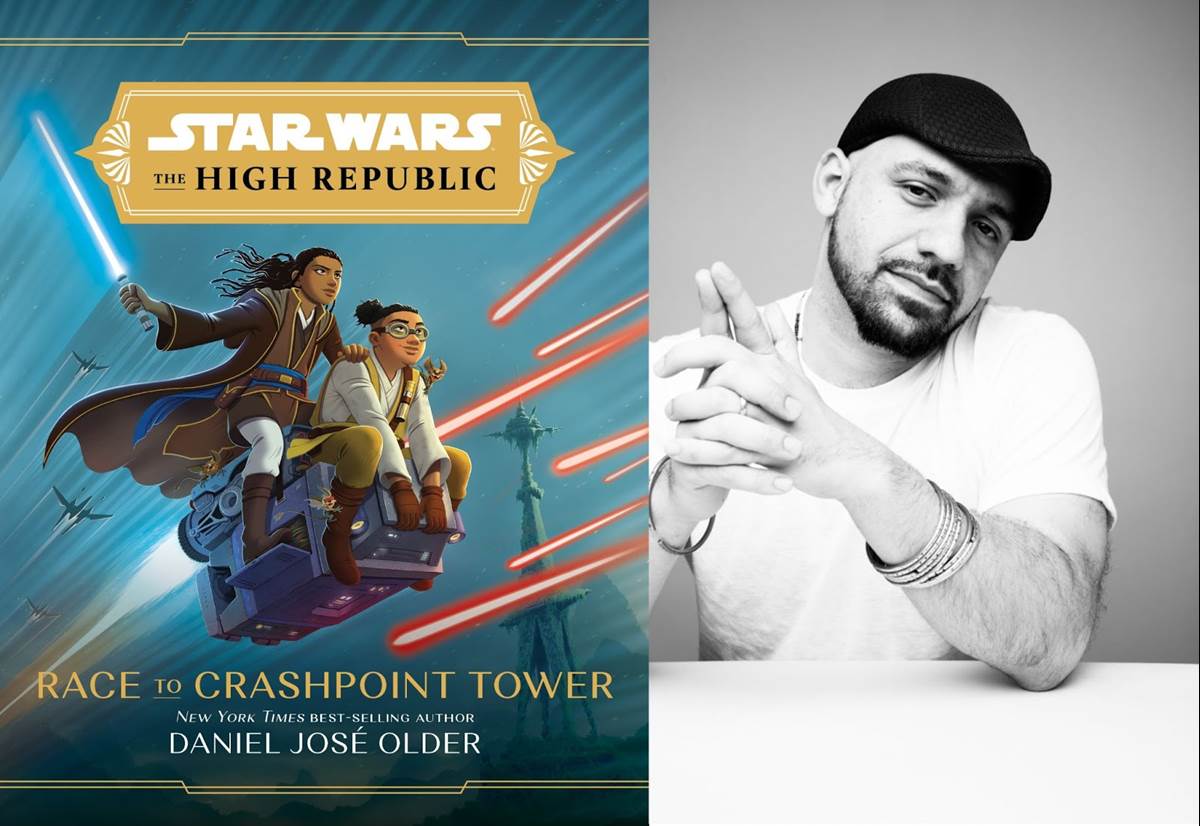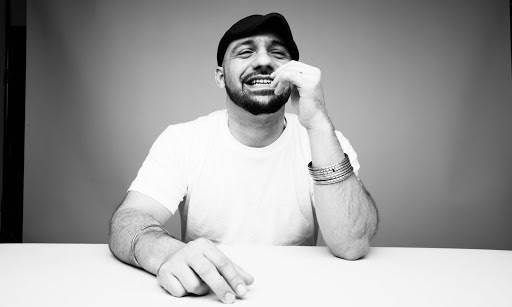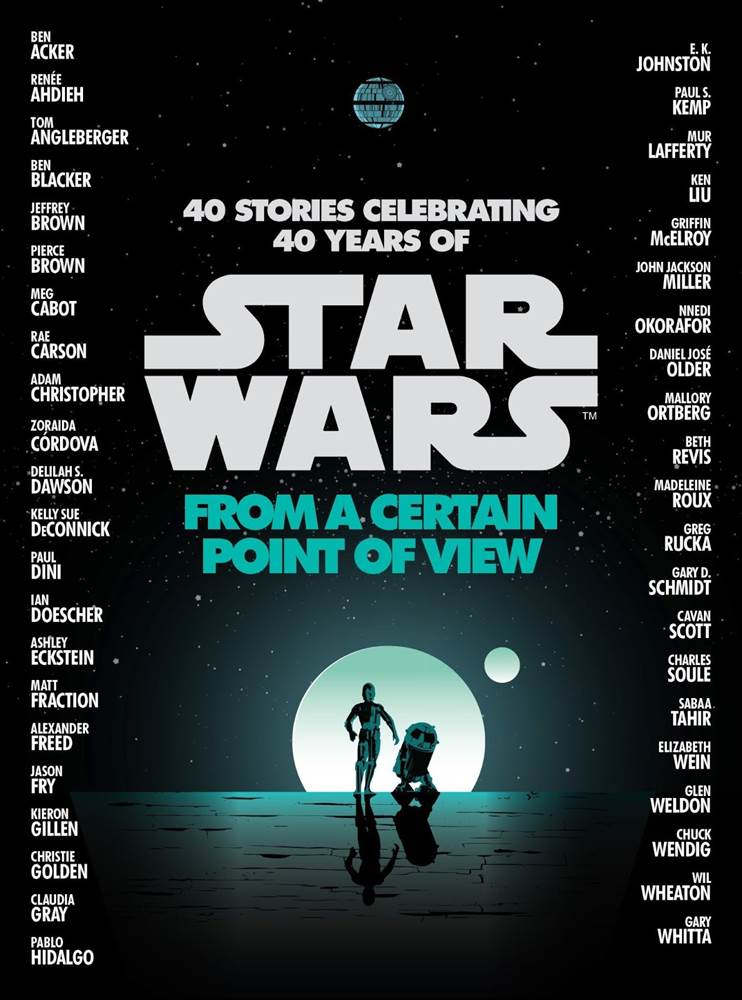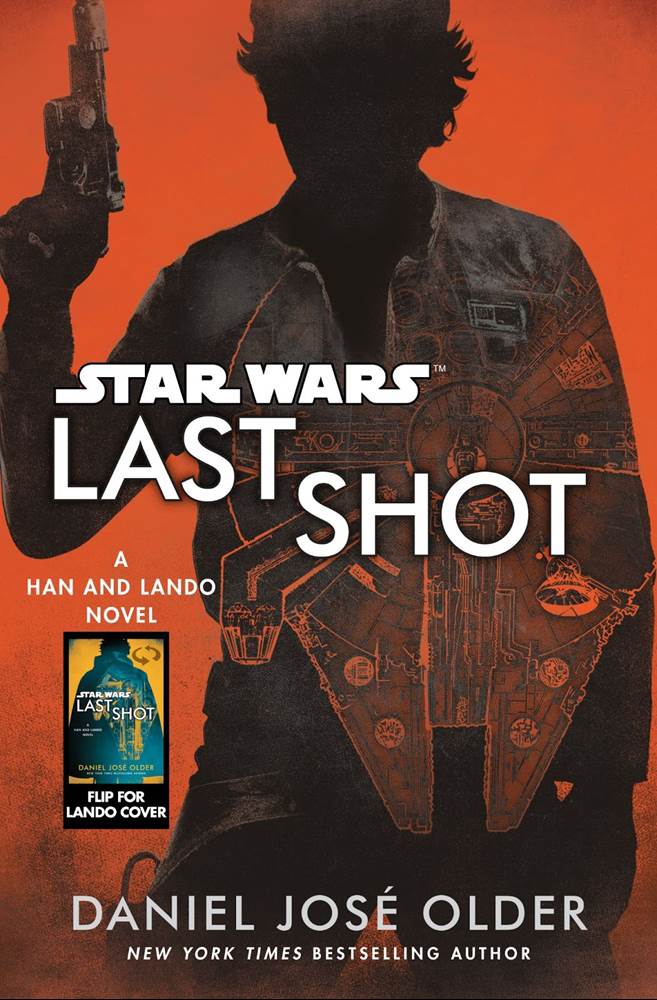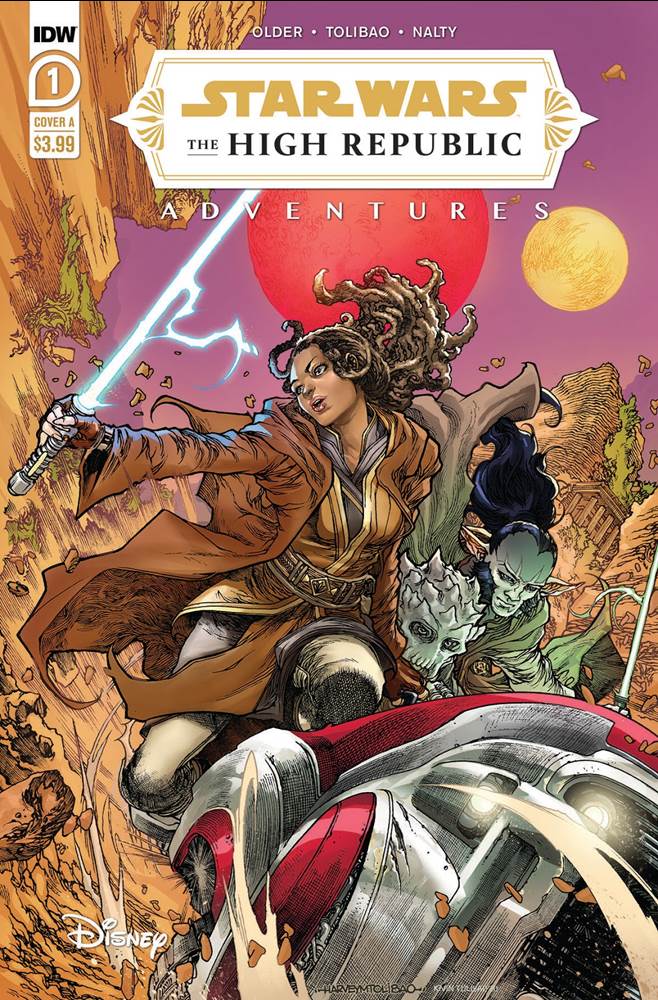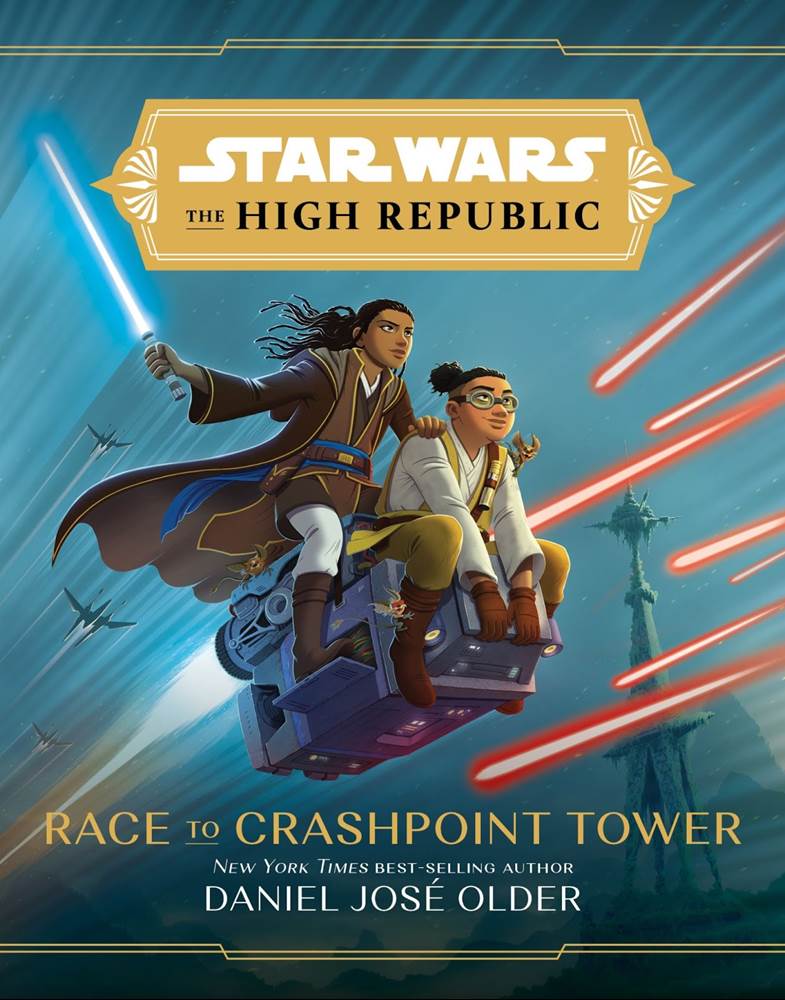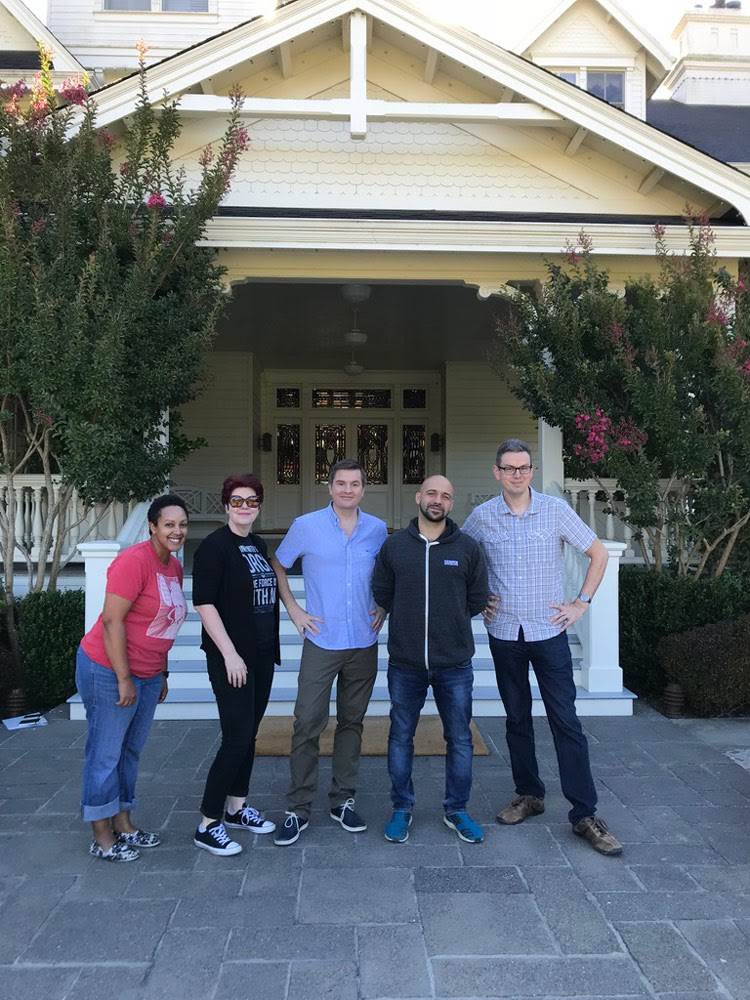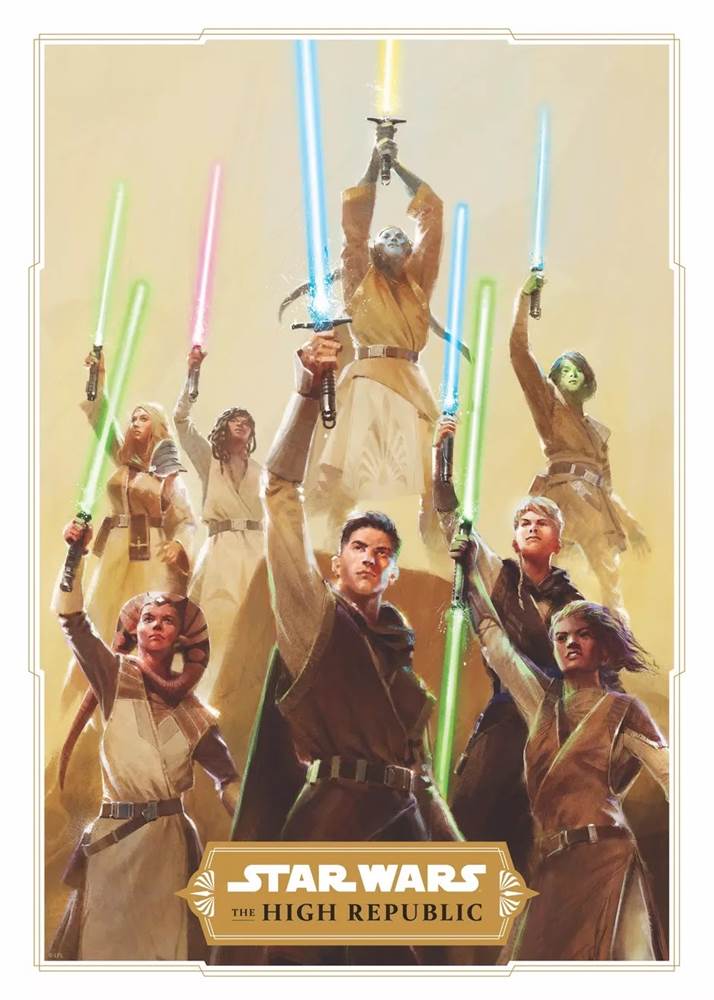Daniel José Older’s writing career began in 2014 while working as a New York City EMT. He’s created the Shadowshaper Cypher young-adult series, the Dactyl Hill Squad middle-grade series, and the Bone Street Rumba series of adult novels, in addition to several stand-alone books. In 2018, Older stepped into A Galaxy Far, Far Away with the Solo: A Star Wars Story tie-in novel Star Wars: Last Shot and is one of five main authors contributing to Lucasfilm Publishing’s ambitious multi-year cross-platform initiative Star Wars: The High Republic.
I recently had the wonderful opportunity to speak with Daniel José Older about his new middle-grade release Star Wars: The High Republic – Race to Crashpoint Tower, his work on the ongoing Star Wars: The High Republic Adventures comic book for IDW, and his history as a lifelong Star Wars fan.
Mike Celestino, Laughing Place: What was your relationship with Star Wars prior to becoming a Star Wars writer?
Daniel José Older: Oh, I'm a lifelong fan, I've been loving Star Wars my entire life. Quite literally Return of the Jedi was the first movie I ever saw in the movie theater. I was three years old, and it absolutely changed my life. The Rancor terrified me, but I kept calm. I literally ran out of the theater and I came back and kept watching it. I remember very clearly too, being really obsessed with the behind-the-scenes specials that they did about them. That whole Jabba sequence, and just the monsters and all of it, it's just my sweet spot. And it has been since then, and I love it. That's been my number one fandom my whole life. There's other stuff that I love, but there's nothing like Star Wars.
LP: So how did you go from being a fan to actually contributing to the Star Wars canon, and what has that experience been like for you overall?
Older: It's been about as amazing as you might imagine, going from fan to writer. Totally a dream come true. I've really just enjoyed myself these past couple of years, and it really has just been amazing. I'd been writing for a couple of years. I had a few books out, and I think someone– or a couple someones– might have passed my name along to the folks who were looking for writers to fill this anthology From a Certain Point of View, which was [celebrating] the 40th anniversary of the [original] film, and somehow my name came up. When they reached out about doing that short story, I think I wrote just a whole bunch of swear words back to my agent when he asked if I was interested, like excited. And he was like, ‘Should I just forward this to the Lucasfilm people?’ [laughs] I was really just over the moon. Then shortly after that, I had my agent let them know, ‘If y'all are looking for someone to write a novel, I am available.’ So they did. And the rest is Star Wars history.
LP: Going back to A Certain Point of View, you've contributed to both the Star Wars one and The Empire Strikes Back one so far. What made you select the characters that you selected, and how did you go about approaching them?
Older: Honestly, for the first one, everyone else was taken. [laughs] Sorry, Sardis fans. I'm a musician, so I was kind of hoping to do one of the Modal Nodes or something. I thought I could do something fun with that. Everyone had scooped up everybody. I think there was a delay in some of the paperwork, or something happened where I just didn't get a chance to choose. They sent me back the list, and they're like, ‘So here are the available characters.’ And it was like a sand dune, you know? [laughs] And I was like, ‘You know what? I can do something fun with a Stormtrooper.’ The heart and soul of that story structure really is paperwork and my deep hatred of paperwork and bureaucracy.
As a paramedic, that was one of the main things we had to spend our time doing, rather than saving people's lives. Or as soon as you save someone's life, the next thing that you have to do is paperwork. And as soon as someone dies, the next thing that you have to do is paperwork. It really is just there at the beginning of the end of every day. And I hate it. So I wanted a character that hated paperwork as much as I do, and also was able to maneuver around it and still tell a great story through it, and also loves Dewbacks as much as I do. And that's where Sardis Ramsin came from. I have a special place in my heart for him, because he's a Dewback-lover like myself and because he's my first original Star Wars character. He appears in Last Shot, and we will see him again in something upcoming that I'm excited about, but I don't think I can say what yet.
LP: And then 4-LOM and Zuckuss from The Empire Strikes Back?
Older: They are definitely favorites. I really love the whole underworld aspect of Star Wars in part because of what I said– Jabba's Palace is really my happy place. And I think there's so much interesting stuff to be told. Also, I'm a big fan of gangster movies and stories in general. So to combine the two fandoms is kind of perfect. I love 4-LOM and Zuckuss. It's interesting because I really enjoyed writing that story, but I feel like I really cracked them with the Marvel one-shot [comic book] that's coming up [in which] I got to write about them.
The story in [From] A Certain Point of View is much more told from a different character’s point of view, who's a reporter who's following them along and doing a puff piece on them that goes awry. We see them from the outside a lot more. And they're much more the intractable, hard-to-read gangster types that we meet in Empire, even though there's some humor there and there's different elements for sure. But it wasn't until I wrote this Marvel one-shot that I really was like, ‘Oh, this is really what they're about on a whole other level.’ It's been really interesting to have the opportunity to write them more than once, because they're a cipher. They're really complex in a lot of ways and we don't know a lot about them, so it's been really fun.
LP: The first full-length Star Wars novel you wrote was Last Shot in 2018. What aspects of Han and Lando's often tempestuous friendship did you find most interesting to explore in writing that book?
Older: I think particularly with that book, it's the longevity of their friendship. That's a book that, at its core, spans decades, and it spans their friendship over decades. Even though we don't see them interact in their younger versions so much in that book at all, it really is still the story of a friendship that's been going on for years and years, and the highs and the lows of that, and the problems with that, and really what it means to deal with people and to grow up. A lot of that book is about growing up and seeing them in their 20s versus them in their 40s, and what that means for them to take responsibility– of life, of love, family and each other, and friendships. The friendship really is at the core of that book. I think there's such interesting characters because they could be confused for being very similar. They're both smugglers, they're both charismatic, they're both leaders in the rebellion, and yet they're totally different.
They're very, very different in ways that matter. In Last Shot, they each have a moment of getting dressed, and I think so much power and personality is in the choices we make around our appearance. Lando is the most obvious example of that in the entire Star Wars canon. He is everything, style-wise. That's so key to his personality– the capes, the swagger, all that. And Han has his own kind of swagger. It's a much more laid back, dirt-on-your-cuffs kind of swagger, but it's still a swagger. So I thought it was an interesting opportunity to play with those different types of how we perform dressing up.
LP: Getting into The High Republic, both The High Republic Adventures comic book for IDW that you're writing and the middle-grade novel Race to Crashpoint Tower focus on the Jedi Padawans during this previously unexplored era in the timeline. What challenges have you encountered in making Star Wars appeal to younger audiences these days?
Older: Star Wars has always been family-friendly on a number of levels, and it's swayed into heavier material at times– like with Rogue One most obviously, and other moments. But at its baseline, it's very accessible to young people. I think that's something that we've all loved about it on a certain level, that it reaches us in different ways at different ages. The me watching Return of the Jedi as a three-year-old obviously took a whole different thing from it then the me watching it now, and everything in between. I think that's one of the great joys of Star Wars. For me, it was just really important to have young people in these stories, because they're really focused on and for young people. I wanted them to, yes, feel accessible to adults, but mostly [to] revolve around young people's struggles and lives and stories.
We're really seeing the galaxy through the eyes of these Padawans, and understanding what the changing galaxy looks like from a young person's point of view. That's what was really important to me. I think there's a lot of storytelling to happen there and there's a lot of different perspectives that young people bring to the page and to the story, so it was really about throwing all these different folks into the mix and seeing what their journeys are and what their experiences are.
LP: Race to Crashpoint Tower intersects with both your High Republic Adventures comic and Cavan Scott's The Rising Storm, and also you borrow at least one character from Justina Ireland's books. What is the collaborative process like with the other authors, keeping track of where the characters are at any given point in the timeline and ‘what's happening when’ as we progress through the story of The High Republic?
Older: That is one of the great joys and one of the great challenges of the whole process. There are so many characters running around and there's these five writers responsible for them. One of the other great things about Star Wars is that it cares about its timeline, and that's not to say that it gets it right every time and that no one makes mistakes. There certainly are mistakes, but what matters is that history matters in Star Wars, whether it's in the minutia or the large beats. I know that's one of the reasons I love it so much– there are these historical moments that touch on so many different lives. We really all care about that and worked really hard to get it right, in terms of where people are. To that end, we have spreadsheets and slack conversations and phone calls and all kinds of other things and conversations off to the side and conversations with the larger group. But at the end of the day, the most important thing is telling a good story and creating characters that people can believe in. So we really just mostly have fun.
I loved it that everyone treats whoever created [a given] character a little bit like their guardian. So it's like, ‘Hey, is Cohmac available in this moment? Can I borrow him for something?’ I'll check in with Claudia [Gray], and Claudia doesn't own Cohmac, but Claudia created Cohmac, so we kind of defer to her a little bit. There’s a sequence coming up in the IDW [comic] where the whole crew of the Vessel shows up– Leox, Geode, and Affie– and they get to hang out with the Padawans from the IDW crew– Farzala and Qort, specifically– and they go on a mission together. It was so much fun to write, because when I was reading Into the Dark, I was just like, ‘This is such a great story and I love these characters.’ And then I got to write those characters. It's such a thrill. I immediately sent it to Claudia, and I was like, ‘Did I do right by your characters?’ She gave me the thumbs up, so I knew I was all right.
LP: Speaking of characters you've created, the new character in Race to Crashpoint Tower is named Ram Jomaram. Tell me about where he came from and why he's a good complement to his fellow Padawan Lula Talisola.
Older: Ram is really just not about the pomp and circumstance. It's not that he doesn't like people, it's that he doesn't like being around people. [laughs] He really just wants to be in his garage, getting greasy and fixing things. And as a writer, I very much relate to that. I don't dislike going to cons… I love going to cons, but I also– most of all– love just hiding away in my little world and creating stories, which is the equivalent of Ram's love of mechanics. That's just what he loves doing. I wanted to explore that side of being a Jedi that's not about fighting and not about ceremony and not about all of these grand gestures that they make, but just about the very real-world things.
Again, this is peacetime, for the most part. At least he grew up during peacetime, even if it's not the way right now. He has that luxury of being able to use the force to connect with his obsession, with mechanics and all things gears and grease and everything else, and just enjoy his life that way. I thought it'd be interesting to explore, especially in counterpoint of Lula, who's all about the Jedi Order, both the performance aspect of it– just presenting herself as this great Jedi, which she is and will be– and then also she's a really good fighter at this point and has experienced a lot of things already. She loves being good at stuff, and that's very different than Ram. So there's a lot for them to have conversations about.
LP: I want to get into your ability to push the envelope as a Star Wars writer. You've said on Twitter that you're often surprised with what Lucasfilm allows you to get away with in Star Wars stories. What are some of your most memorable examples of that?
Older: The one that first comes to mind is Aro N'cookaala, the Gungan in Last Shot, who doesn't speak in the traditional Gungan patois that we've come to know, and in fact is resentful of the connection that people make between Gungans and that form of speaking. I thought it was an important conversation to have. Just very honestly, we don't see that many Gungans, and the ones we see are all in very particular situations, so we have this one association with them. But I think in general, in fantasy literature, it's really important to break open the notion that one single species just does this one thing, or is this one way. That's a very basic form of world-building that doesn't really work in the real world.
If we think about humans, obviously we come in very many shapes, sizes, and language skills. I think it's important to recognize that as we build worlds– [to] challenge that a little bit. That's really what was happening there, in a way that was fun and funny and put Han in a position where he was awkward and bumbling, which is always fun to do… and then also let Aro join the team for a little while and be part of the action. But it was a moment where I was like, ‘I don't know if [Lucasfilm wants] to have this conversation.’ There's a very entrenched notion of species being this way or that way. Sometimes people want to stick to it, and to Lucasfilm's credit they were all for it, which was great.
LP: I've found myself occasionally taken aback by your willingness to use what I would call modern-day slang in Star Wars writing. Is that something you've ever gotten pushback on and if so what was your justification?
Older: I think it's a really complicated balance to strike. I don't think there's a simple answer to it and everyone has their own take on it or where they feel comfortable doing it. I think sometimes the conversation gets simplified. ‘This is slang or that is slang,’ or ‘This works in Star Wars and that doesn't.’ And the truth is Star Wars has always had slang in it. It's always used slang from the very beginning. Sometimes they'll create their own Star Wars slang, and sometimes it's real-world, this-world slang. That's part of what makes it feel lived-in. The danger, obviously, is pulling people out of the world and making them feel too much in this one. That's a similar challenge that we find in technology and creature creation throughout. We're always trying to balance the familiar with the not-too-familiar. And that's a hard thing to know. It makes sense that every author is going to have their different take on it. I do think it's important to have certain amounts of slang in there, because it's the way that the characters would talk.
For me, I was just trying to imagine it on film. It was easier with Last Shot because those were characters we knew and loved, and I've had those guys' voices in my head my whole life. But when you're creating new original characters in an original era, that does become more complicated and you have to figure it out. But what I don't want, first of all, is this notion that there's one true language. It’s false. Language is constantly in motion, and that's what we love about it. It's fluid. It's like the force. It's like the future– it’s always in motion, and that's [what’s] amazing about it. I think we have to value that and honor it, and also not go over the deep end and just have them saying stuff that doesn't feel right. So it's a question of feel. ‘Does it feel right?’
LP: What else do you find unique about writing in these different eras, between the Original Trilogy era and the High Republic era? How is the approach to each era different as a writer?
Older: It is very different and on the larger meta level: the government is bad in the Original Trilogy. And not only are they bad, they are the antagonists. Stormtroopers are the bad cops of that era. That is the total polar opposite [of] what we're doing with The High Republic, where the government is… not perfect by any means, because it's a government– there's no such thing as perfect government– but they're doing their best. They're really fighting for freedom and equality in a way that matters. They're the good guys. That alone is a totally different dynamic to play with, just in terms of world-building and conflict and any other element that you want to bring up. It's the reverse. So just on that level, it's very different. On the other level, the galaxy is just in a good place. The Nihil are a real threat, the Drengir are a real threat, and in a way that matters on a galactic level because the galaxy is in such a good place. It's a golden era, so we care more about it not being disrupted.
[With] the Empire, it’s like ‘Yeah, disrupt the Empire, absolutely. Do what you gotta do.’ But when it's the golden era, you want things to keep going and get better and keep being great. Those are very different impulses for conflicts that fuel the story and fuel the characters and everything else. I think that's the most important [difference]. It's been really fascinating to write different planets that we know and love, but then try to take them back into what they might've looked like back when things were great and imagine them that way. I don't think I can say which ones, because a couple of them are coming up on the horizon. I don't know if we've announced [them] yet, but I will just say that a really cool part of the process is to imagine planets that we know to be kind of run-down and busted, and see what it looks like when you take away that layer of grease and dust and see what's underneath it… what it was like in the glory years.
LP: Speaking of things you might not be able to talk about too much, what can you tell me about the upcoming Marvel Comics miniseries Star Wars: The High Republic Trail of Shadows?
Older: Trail of Shadows is like nothing else we've seen in Star Wars. We've seen noir, and Star Wars does noir really well. I think this levels that up in a different direction, in ways that we will see when it happens. [laughs] That's all I can say, but I'm really excited about it. It's been a joy to work on. David Wachter's art is amazing. I just can't wait for people to read it because… oh my goodness. Oh my goodness.
Star Wars: The High Republic – Race to Crashpoint Tower will be published tomorrow, June 29, but is available for pre-order right now.

